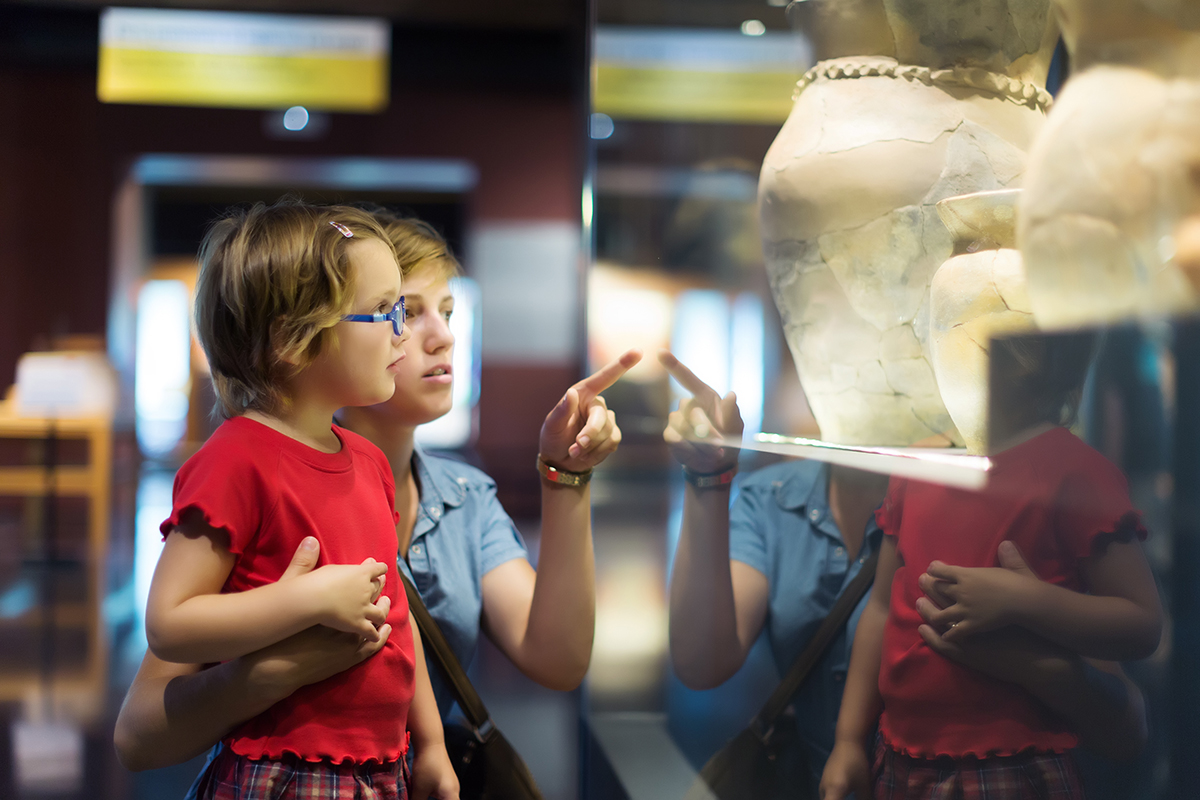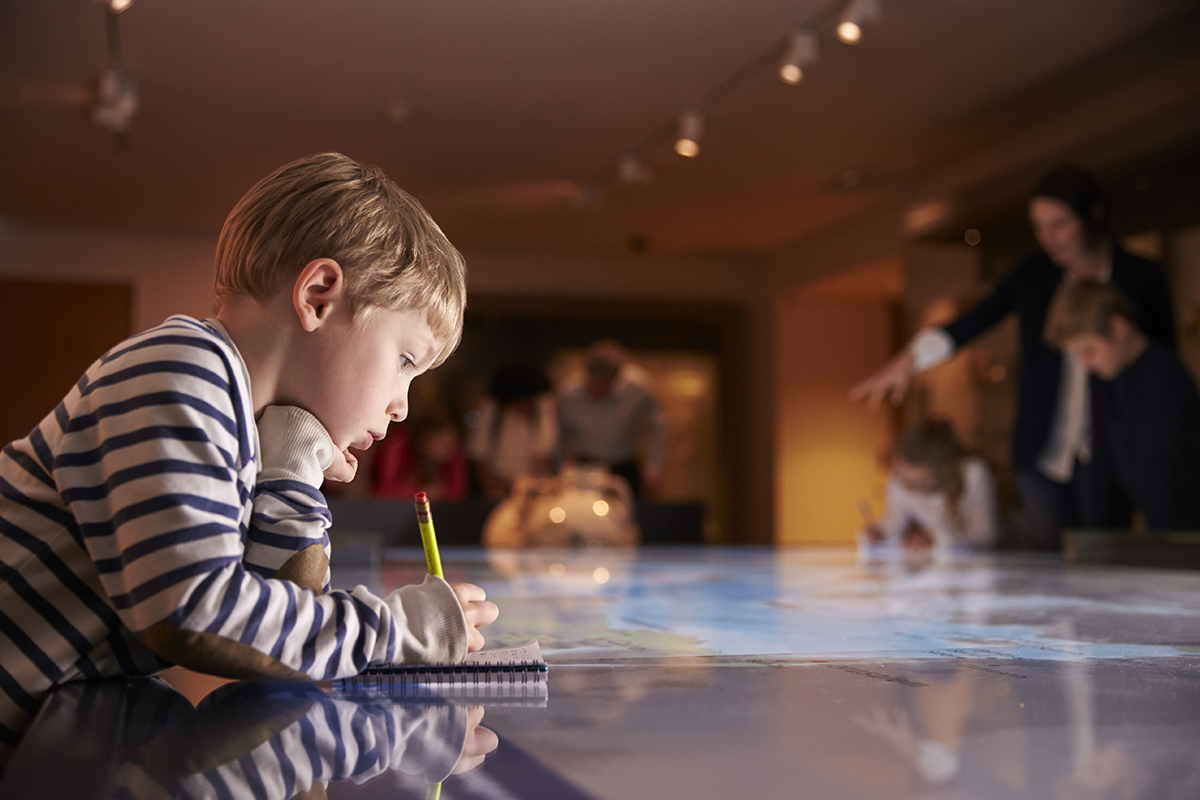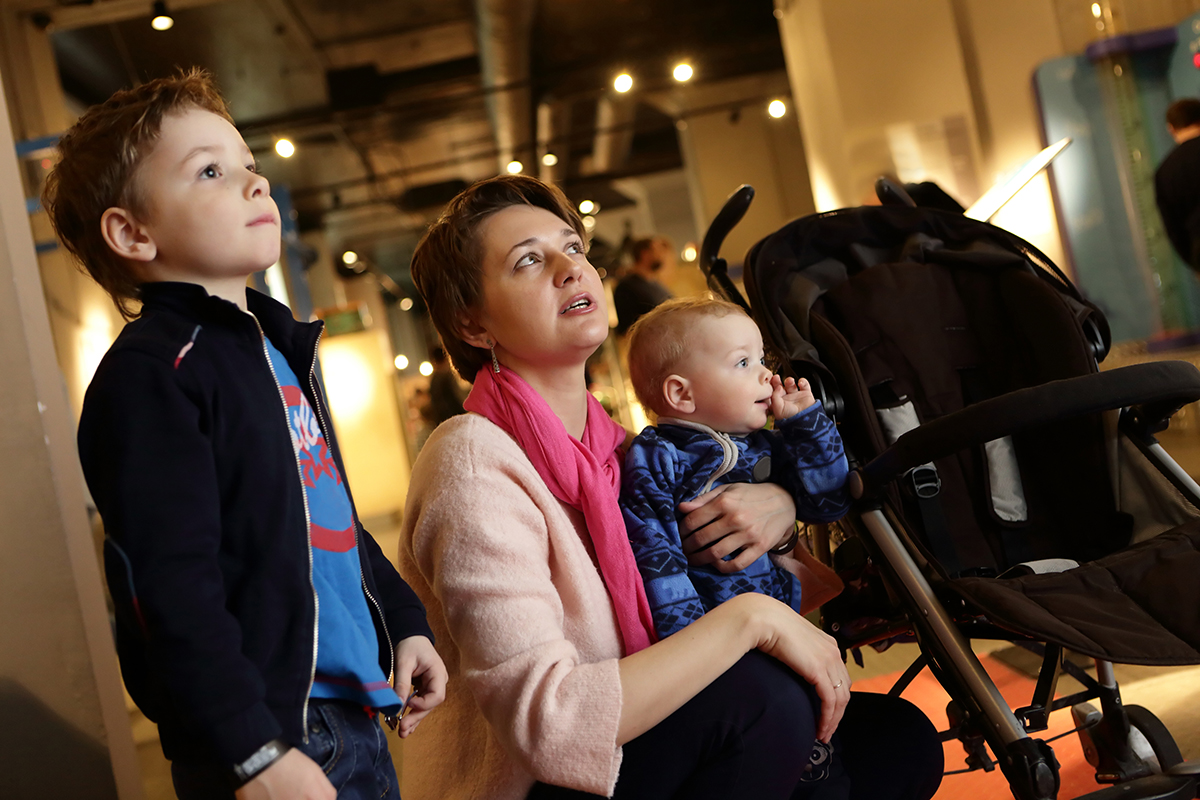
Visiting anything cultural with your children can be stressful at the best of times. Gone are the days when on a whim you could decide to nip into a museum to gaze upon your favorite painting or sculpture. Remember those moments of peaceful restoration in front of your favorite artwork or hotly anticipated exhibition? For most of us, they have been replaced with heavy laden pushchairs, snotty nosed toddlers, lack-of-volume-switch paranoia and silent cusses that humans were born with a mere two arms. Sound familiar?!
I guarantee we have all made this mistake at least once. What was supposed to have been a wonderful family treat out, descends into chaos and before you know it everyone is bickering and you all wish you hadn’t have left home and spent the extortionate entrance fee. If this hasn’t happened to you, then you for sure deserve a pat on your back and a parental gold medal, from me and I’m sure many others! Let me reassure you, readers, I have made this mistake MORE than once. Shame me once and all that…
Fear not. It is, in fact, possible to take your children to a large Museum (free or otherwise), enjoy yourself and make lots of great memories. To do this, I have compiled a simple list of things to consider before you go and things to follow throughout the day.

- Research. Research. Research. I cannot stress this enough. Explore your options before you leave the house. What will interest your children, is there something that will entertain all of them in one building. What facilities does the museum have? Is there a cafe? What exhibitions are on there and do you have to pay extra for them? Will it be worth it if you pay that extra fee? Are there any child-specific activities on at the museum? Gone are the days when museums did not cater at all for children. Museums these days regardless of size will have something for children. Art museums may have creative weekend mornings that allow the children to do crafts and have taught art lessons surrounded by artworks. Many science museums in the last decade have become hugely child-friendly, with many exhibits being interactive. Engaging a younger audience with kinetic activity (hands-on experience). Museum’s such as the Victoria and Albert Museum in London have interactive screens where you can build your own coat or arms or create your own family crest. They even have Victorian costumes to dress up in. Even Big Feet like to have a go! I have photographic evidence! Some museums even have specific family days to explore the museum with discounted ticket prices, a bit like a ‘Mum and Tots’ morning.
- Try not to visit Museums at peak times. This sounds contradictory I realize, as this is when most people will have time to visit them. Peak times, in this sense, is the middle of the day. If you know the museum you are going to is going to be really busy, be at the door before it opens. Be the first people into the museum. This will give you free reign of the building before the crowds start to emerge and hysteria kicks in.
- Make sure your children have had a good meal before leaving for your destination. Start the day as you mean to go on, in good spirits. Why not organize a fun breakfast to get them geared up and excited for the rest of the day. ‘Hanger’ (hunger-induced anger) can creep up on even us Big Feet so a full stomach is important!
- When you get to your museum of choice, leave as much as you can in the cloakroom / coat check. You do not want to be heavy laden with coats, umbrellas, heavy rucksacks and pushchairs. This isn’t to say you shouldn’t take any bags with you though, don’t make the mistake of leaving the most important one with emergency snacks, a drink and any essentials that could make or break a day. Make sure this bag is a rucksack though so you have both hands accessible for your children to hang off.
- If you have taken the above advice then you will have already planned which sections of the museum you think will be most rewarding and enjoyable for your children. If that is the case, go there first! You want them to go round them when they are freshest.

- Before wandering off through the museum, check to see if there are any treasure hunts or activity packs for children at the entrance. Museums often use these as tools to keep little visitors busy, but more importantly, help engage with items in the museum.
- Keeping them engaged. In each room let them wander around, give them some space to do this without any bombardment of questions from you. For the sake of clarity, let’s say you are in an art museum. Once they have had a look ask them which piece of artwork is their favorite. Depending on their age you might easily be able to extract the ‘why’ is it their favorite. Younger ages may need some help. Go over the artwork and talk about it with them. If it is a painting, for example, start by using some open-ended questions like; what has the artist painted? What colors does the artist use? Why do you think they used those colors? Do you think they used those colors to make us, the viewer feel a certain emotion? Open-ended questions help spark their curiosity and creativity. They require your child to think about their answers and respond further than a simple yes or no question.
- Children may consider taking a sketchbook with them around the museum and draw some sculptures or copy some of the paintings. Perhaps it has tied in with something they are learning at school or at home. A camera could also help document their trip and add another fun element to the day as a whole.
- When you have finished looking around, see if you can find any free leaflets with their favorite parts of the museum on them. Go to the shop and see if there are any postcards of them too. All of these bits, combined with their photos and drawings will be a fun project for them to scrapbook and look at after you leave.
- Predict their drop in energy before it happens, or right as it starts to happen. Move into another section or better still, have a cafe pit stop and rejuvenate. If it’s lunchtime stock their bellies up, if it isn’t, cake is always a winner!

- Leave on a high. This is important, you need to go into these trips with no pressure of how short or long a period of time your children can cope with. If they can only cope with an hour or two then try and be satisfied with that. Forcing your children to be in a museum longer then they want to be will quickly take away any joy they have had and reluctance to go to a place like that again. If they can last longer with a cafe stop in the middle then excellent, you are winning at life! At the end of the day, you know your family, their attention spans and their levels of tiredness.
This is not an exhaustive list, but you get the idea. Museums are often given a bad reputation, being labelled, ‘boring’. They may once have been for children, but they are not any longer. Curators have realized that they need to engage with younger audiences if they are to survive the test of time. These audiences are their future and their best investments. So, don’t be scared or overwhelmed taking your children to them. They are hubs of huge potential, filled with limitless creativity and inspiration. Be prepared, but be relaxed and have fun with your children in them. And if you do come across withering looks, well, be safe in the knowledge that your children are the future. Every parent that has that outward-looking view has forgotten what it looks like to look at the world through the eyes of a child. Some would even say we could learn, or rather remember a thing or two from that joy and chaos of childhood.
Don’t forget to follow us on Twitter, Instagram, Pinterest, and Facebook!
 Contributor
Contributor
Grace Selous Bull is an arts education author and freelance blogger. Her book, ‘Potty About Pots: arts and crafts for home and school’ is aimed at children from 5-12 years old and takes them through a journey of ceramics through time. She is a full time Mummy of two girls, both of whom love being creative, and is married to her husband, Andrew, who does not.
Original content © 2018 Super Simple. Not to be reprinted without express written permission. Terms of Service.

